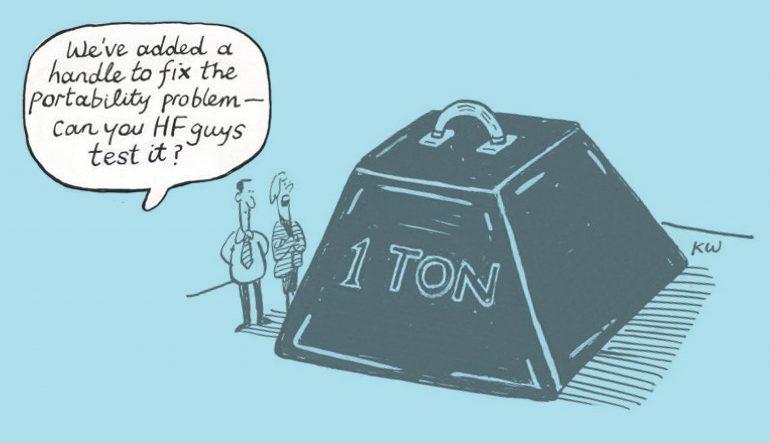The importance of usability in medical device design
Dr Katherine Faull – Head of Consumer Usability Research and Development, Rapid Response Revival
Usability is a cornerstone of information technology (IT). Take website development, where strong system architectures and design principles can support development of interactive software that meets the needs of, and is intuitive for non-technical users.
Usability is equally relevant in the world of medicine, where medical devices are employed to support the diagnosis and treatment of disease.
Many of these devices would be handled by medically or technically-trained personnel. In this context, device usability ensures safety and efficacy in patient outcomes, while assuming the user has a certain level of knowledge, understanding and training. Usability in hospital settings is, however, a relatively new field.
Usability in home-use med tech
With the growing availability of highly technical medical devices for home-use, usability principles are being increasingly applied to ensure safety, efficacy, and convenience and efficiency in use outside clinical settings.
For these devices, equipment and user interface designs need to account for the fact that users are unlikely to be medically trained, and usage will be in a non-medical environment.
To that end, human factors must be taken into consideration; The user’s physiological and psychological capabilities in effectively operating the device come into play.
Medical device usability is no longer focussed on how inherently easy the device is to use, but in understanding it as a system within a context of use.
The application of such principles to the user or human-centric design of a medical device can go a long way in mitigating risks. This includes potential errors in the use of the device, to ensure safety and efficacy for both patient and user, in environments that may vary drastically from clinical settings.
This is especially true for medical devices falling within Class III of the Medical Devices Regulation. Such devices are deemed high-risk devices due to the nature of the use-risk potential.
Defibrillator usability
Defibrillators are examples of high-risk devices. Once manufactured strictly for use by doctors in hospital settings, automated external defibrillators (AEDs) are now designed for use by laypersons.
RELATED ARTICLE: Difference between hospital defibrillators and AEDs.
While AEDs are designed for ease-of-use, their design has not evolved as significantly as the user’s needs have evolved.
For example, devices designed for use outside of controlled clinical environments must address a diverse array of additional environmental requirements including variations in visibility, lighting, noise, and user stress and associated pressures.
The simpler an AED is to use, with as few as possible critical tasks required to access, activate and apply the device, the higher the likelihood of safe and effective use. There remain, however, many persisting barriers to AED use.
RELATED ARTICLE: Seven reasons why AEDs aren’t used.
Usability summative evaluations enable medical device manufacturers to study the use of a device by an intended user, within an intended use environment.
It is a regulatory requirement for a manufacturer to demonstrate this validation of the device’s usability. That said, the importance of usability goes beyond being a step toward regulatory approval.
Importance of usability in medical device design
Incorporating usability principles in the design of the medical device from conception can identify and mitigate potential use-related risks early in the design and development process. Ideally, the design and development of a high-risk medical device should be an iterative process, enabling usability feedback to inform the design throughout the process.
While many medical device manufacturers now recognise the importance of usability, and there is an increased focus on user-centric design in the industry, we have taken the next step in committing to device safety and efficacy by dedicating an entire team to usability.



